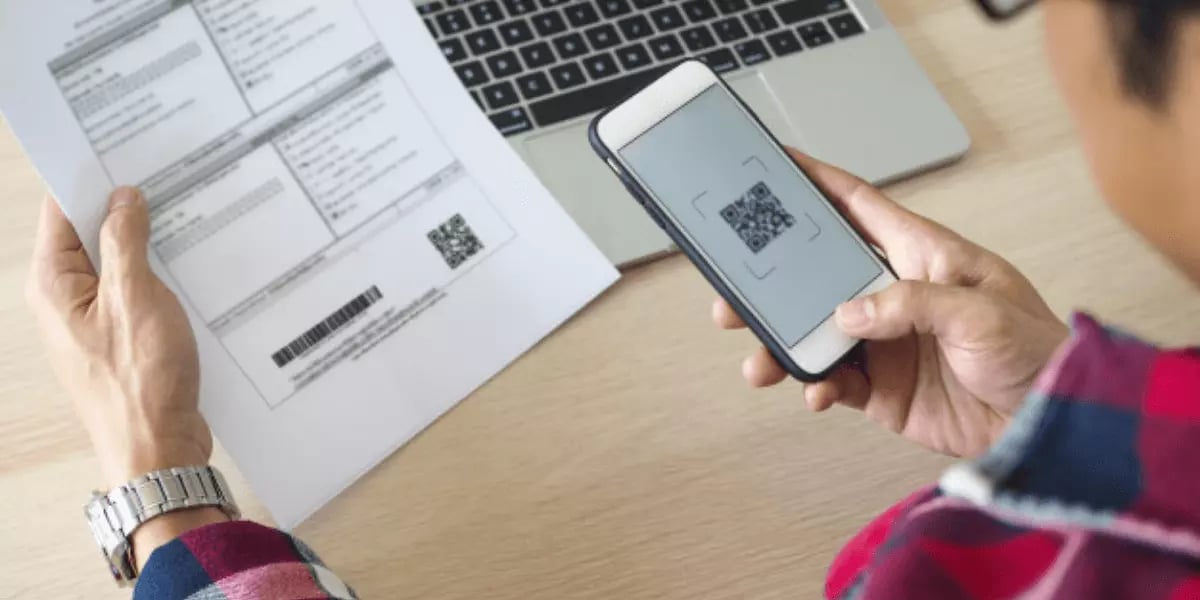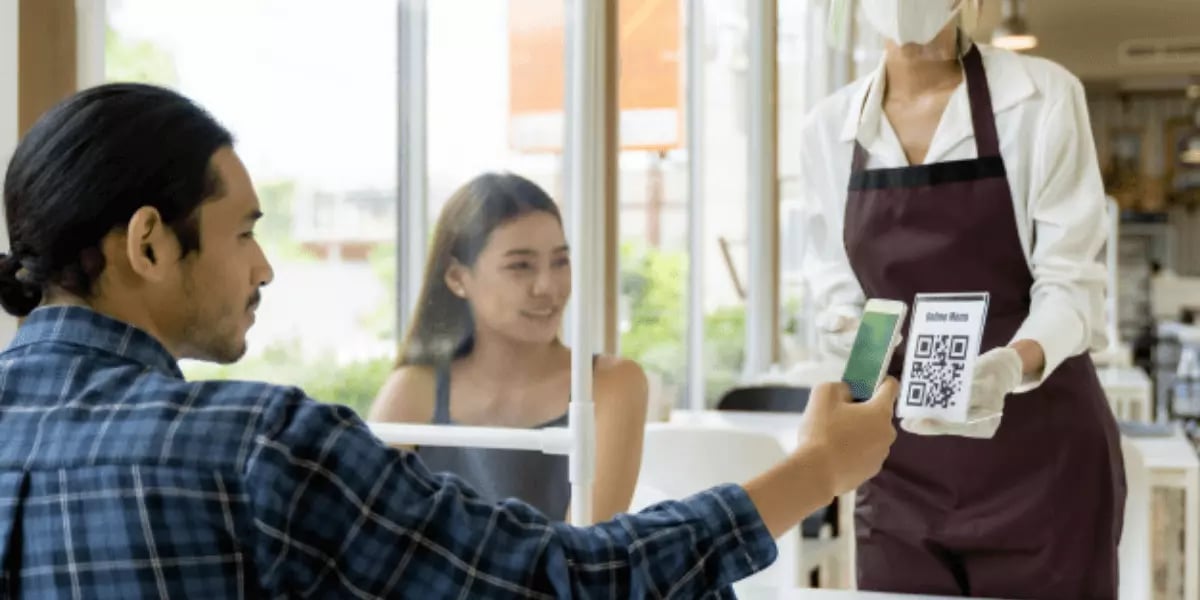Since QR codes were created in the 1990s, they have been used for different purposes. More recently, due to the proliferation of smartphone usage, even more people have come to use QR Codes. In a recent survey by Statista, 32% of respondents scanned a QR code the week before the survey.
As the usage of QR codes increases, one wonders what other non-traditional ways one can use QR codes. It will also be interesting to know if we will see more of it in our future, especially as it pertains to digital banking.

What are QR Codes?
Quick Response (QR) codes were first developed in 1994 by Denso Wave, a Japanese company. They needed to track automotive parts and vehicles while manufacturing them. This need bore a different kind of barcode, encoding kanji, kana, and alphanumeric characters.
It was more efficient to use QR codes to track these components as these codes could contain a lot of information—up to 4000 characters. It is quite different from the mono-dimensional bar code, which you can only read from top to bottom. The standard barcode can store only a small amount of information and only in alphanumeric characters. As QR code patterns are scanned by a camera and processed by a computer, they are faster to read.
After Denso made their QR codes public, it took some time before most people started accepting the usage of these codes. This was because people had to install third-party applications before they could scan QR codes. However, smartphones already have inbuilt scanners, making it easy to scan these codes.

How are QR Codes Used?
Currently, we store different kinds of information on QR codes. These include website URLs, phone numbers, app install information etc. You’ve probably also encountered QR codes the most on product packaging.
There are other more innovative ways of using QR codes. Some marketing agencies have used QR codes for creative and engaging advertising for products. A UK company generates QR codes to be used on gravestones, allowing visitors to scan the marker to learn more about the deceased person’s life.
More recently, people have used QR codes for Coronavirus tracing. In the UK, visitors to bars and restaurants had to scan a barcode when they arrived using the NHS Covid 19 tracing app. It showed where someone had tested positive and helped trace the person along with any other person they might have come in contact with at the bar.

Using QR codes for Payments
The payment scape has been changing rapidly. People have begun using QR codes for payments as it has been seen to considerably lower transaction costs both for vendors and buyers. You want to make payment without paying any fees, and QR codes present you with that opportunity.
Also, with a QR code, you can avoid the stress and errors that might occur when you need to type a series of numbers or input a lot of information to make a transaction. It works in two simple steps; Scan, Pay!
Here in the US and in places like India, China, and Japan, the need for better payment structures has birthed innovative payment and fintech solutions. Fintechs such as Firstech, are at the fore-front of this banking and payment innovation in the US. In India, BharatQR, the world’s first interoperable QR Code acceptance solution, was announced by India’s Central Bank. Fintechs are also adopting this solution across Africa.
For Japan, innovation has been birthed out of necessity. Because Japan is a cash-based society, many cashless innovations have fallen to dry ground in the country. QR codes are, however, becoming quite popular among an erstwhile cash-based society.
After this form of payment became popular in mainland China, Chinese tourists trooping into Japan created a necessity for QR code payments. This has also been supported by the government, which has been trying to get Japan to go cashless for quite some time.
This development is quite interesting as Japan has ignored other cashless payment methods such as credit cards. It is essential to note that the hesitance to adopt cashless payments in Japan is not only caused by a population that’s not ready for innovation. It’s also about vendors considering the hassles and additional fees that come with cashless payments.
Fortunately, QR codes remove those restrictions as vendors do not have to pay too much in terms of additional fees or hassles. As such, it’s much easier for them to offer QR code payments at their service points.
What’s the Future of QR Codes and Payments?
With the growing uptake of QR codes for payment, it has become increasingly important for financial service providers to make this payment method more secure.
Anyone could encode malware onto a QR code; when you scan that, it could export data from your mobile device. This security risk is one of the problems the finance industry needs to solve to ensure that QR code payment is safer. Sometimes, these attackers go as far as switching original QR codes with their malicious ones. As humans cannot read QR codes, it would be almost impossible to detect when this happens.
Consequently, we might be looking to see more innovation concerning security in the future of QR codes. This has already started happening as banks like the Japanese Seven Bank have combined QR codes with facial recognition to add an extra layer of security to this form of payment.
In quite a lot of places worldwide, the main players in the QR payment field are fintechs. As usage increases, banks will also be looking to make QR payment a native bank payment method. With all of this innovation expected from the playing field, we might be seeing a change in the cost of using QR codes. If the traditional banks lean towards more expensive technologies for QR payments, they might increase their prices. This leaves a lot of things up for debate. If people currently opt for QR code payment because it’s cheaper for them, what will they do if it becomes more expensive?
Payment innovation & FirsTech
Even with a heritage of more than 35 years, FirsTech is pushing innovation in the Fintech and payment processing space. QR payment and scanning fits perfectly with this model and has huge potential for future applications. With FirsTech, our solutions are tailored to fit your business needs. Learn more by contacting us today!
Related Posts
-
Money Moves: The Benefits of Same Day ACH
ACH transfers are nothing new—they’ve existed for over 40 years. Peopl...
Read More -
Optical Character Recognition – How Image to Text Impacts the Banking and Payment Industries
Optical Character Recognition, otherwise known as OCR, is another remi...
Read More -
Using Automated File Transfer (AFT) to Streamline Data Management
Replace the manual management of data with a secure and efficient solu...
Read More -
Understanding Cashless Payment Solutions
The payment processing landscape has continued to evolve at a rapid pa...
Read More -
Examples of Banking as a Service
What BaaS looks like in a business like yours.
Read More
